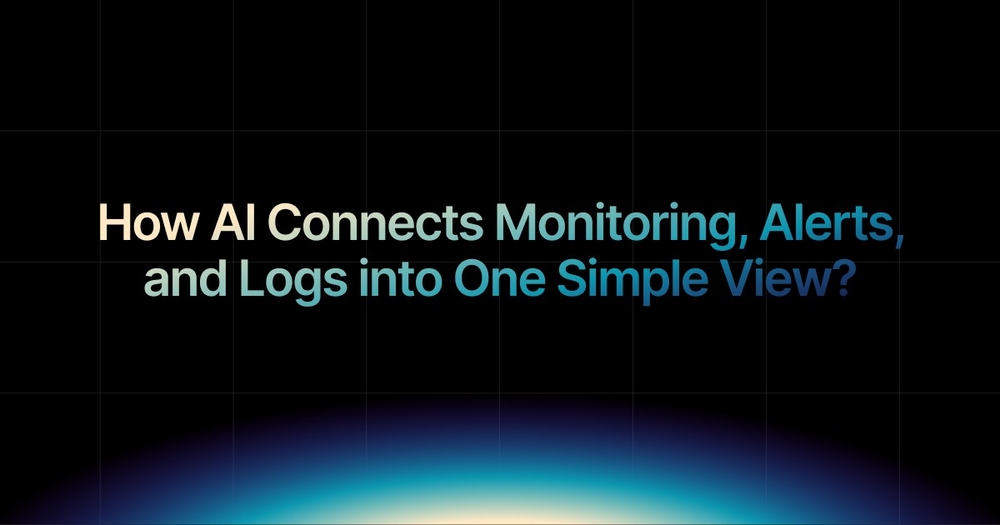Published
- 2 min read
How AI connects monitoring, alerts, and logs into one simple view?

In cloud-native environments, observability is a foundational requirement, not an optional add-on. Traditional DevOps workflows often treat monitoring, alerting, and logging as distinct functions, managed across multiple disconnected tools.
This fragmentation leads to inefficiencies, delays in incident response, and a poor developer experience.
At Kuberns, we set out to solve this by rethinking observability from the ground up:
What if monitoring, alerts, and logs were automatically connected, visible in a single, intelligent view?
The disconnected tooling
 DevOps teams often rely on several platforms:
DevOps teams often rely on several platforms:
- Monitoring tools like Grafana, Prometheus, or Datadog
- Alerting tools such as PagerDuty or Opsgenie
- Logging platforms like ELK Stack, Loki, or CloudWatch
While each serves its purpose, managing them separately introduces friction:
- High cognitive load and constant context switching
- Inconsistent alert rules and log analysis
- Lack of correlation between incidents and deployments
The more complex your stack becomes, the harder it gets to gain clarity and act quickly.
The AI advantage: Context-aware observability
 AI-powered platforms like Kuberns offer a unified experience that brings metrics, alerts, and logs together seamlessly, with zero manual setup.
AI-powered platforms like Kuberns offer a unified experience that brings metrics, alerts, and logs together seamlessly, with zero manual setup.
When you deploy an application using Kuberns, the platform automatically:
- Captures performance metrics like CPU, memory, and response time
- Triggers alerts using behaviour-based AI instead of fixed thresholds
- Associates logs directly with each deployment, commit, or error
Everything is centralised and contextual, reducing noise and improving visibility.
Key Capabilities
Unified Timeline of Events
All deployment actions, logs, alerts, and system metrics are tied to a single timeline. Whether it’s a new commit, restart, or crash, you can trace the entire sequence instantly.
Adaptive Alerting
Instead of relying on predefined thresholds, AI learns your system’s normal patterns and flags only significant deviations. This drastically reduces false positives and alert fatigue.
Real-Time Visualization
From RAM and CPU usage to response time spikes, everything is displayed in real time. You don’t need to switch tabs or plug into third-party dashboards.
Why this matters?
Modern development teams deploy often, move fast, and need clarity. A unified observability layer powered by AI helps teams:
- Respond faster to issues
- Focus on relevant alerts
- Understand incidents in context
By bridging the gap between logs, metrics, and alerts, platforms like Kuberns offer operational transparency that traditional tools cannot.
Built for developers who move fast
Kuberns is designed for teams that value simplicity, speed, and visibility. Whether you’re a solo founder or an enterprise DevOps team, the platform ensures that every deployment is tracked, monitored, and intelligently managed—automatically.
No plugins. No extra dashboards. No missed signals. Just insight.
Explore it yourself: Deploy your first app on Kuberns